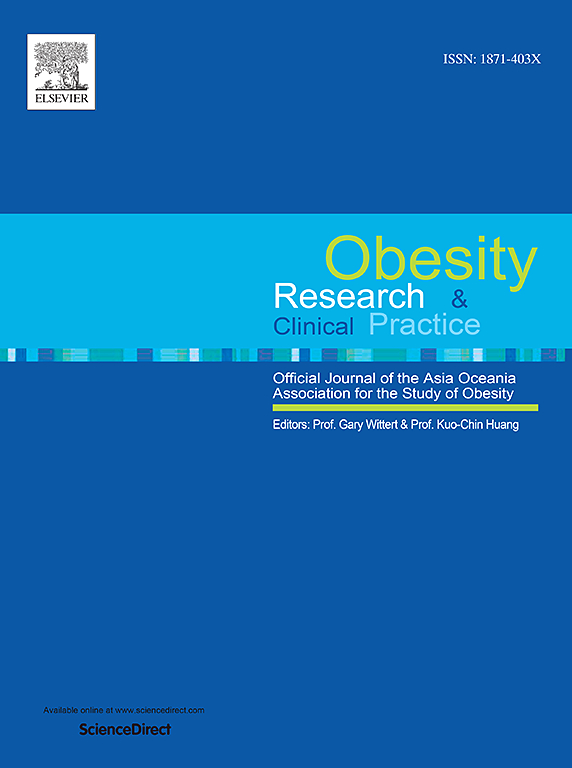Disproportionality analysis on semaglutide and nonarteritic anterior ischemic optic neuropathy in the FDA adverse event reporting system: An emerging pharmacovigilance signal?
IF 2.5
4区 医学
Q3 ENDOCRINOLOGY & METABOLISM
引用次数: 0
Abstract
Background and aim
On January 17th 2025, the European Medicines Agency started a review on semaglutide and Nonarteritic Anterior Ischemic Optic Neuropathy (NAION); we gained insight into this potential association by appraising post-marketing reporting.
Methods
We queried the FDA Adverse Event Reporting System (up to December 2024) to retrieve cases of NAION reported with GLP-1 receptor agonists. Disproportionality analysis was performed by calculating the Reporting Odds Ratio (ROR) with 95 % confidence Interval (CI). Signal of Disproportionate Reporting (SDR) was defined by a lower limit of the 95 %CI> 1. To account for potential confounding by indication and channeling bias, active-comparator restricted design and disproportionality by therapeutic area were performed by comparing semaglutide vs other antidiabetic/antiobesity drugs, including SGLT2-inhibitors.
Results
96 NAION cases were retrieved (83 to semaglutide), peaking 53 in last 3 months (18 from Denmark), with a median time to onset of 186 days. An SDR emerged only for semaglutide (ROR=17.57; 95 %CI=13.93–21.90), and remained significant across comparators and therapeutic indications.
Conclusions
Notwithstanding limitations, including inability to infer causality, the consistency of disproportionality against a wide range of confounders together with other observational evidence raised the hypothesis of a safety signal, especially from Denmark. The exponential reporting trend calls for urgent clarification of drug-, patient- and Country-related risk factors.
FDA不良事件报告系统中semaglutide和非动脉性前缺血性视神经病变的歧化分析:一个新出现的药物警戒信号?
背景和目的:2025年1月17日,欧洲药品管理局开始对西马鲁肽和非动脉性前缺血性视神经病变(NAION)进行审查;通过评估上市后报告,我们深入了解了这种潜在的联系。方法:我们查询FDA不良事件报告系统(截至2024年12月),检索GLP-1受体激动剂报告的NAION病例。歧化分析采用95% %置信区间(CI)计算报告优势比(ROR)。不成比例报告信号(SDR)由95 %CI> 1的下限定义。为了解释潜在的适应症和通道偏倚的混淆,通过比较semaglutide与其他抗糖尿病/抗肥胖药物(包括sglt2抑制剂),进行了活性比较器限制设计和治疗区域的歧化。结果:检索到96例NAION(83例至semaglutide),最近3个月达到高峰53例(18例来自丹麦),中位发病时间为186天。只有semaglutide出现SDR (ROR=17.57;95 %CI=13.93-21.90),并且在比较物和治疗指征中仍然显著。结论:尽管存在局限性,包括无法推断因果关系,但歧化对大范围混杂因素的一致性以及其他观察证据提出了安全信号的假设,特别是来自丹麦的。报告呈指数增长的趋势要求紧急澄清与药物、患者和国家有关的风险因素。
本文章由计算机程序翻译,如有差异,请以英文原文为准。
求助全文
约1分钟内获得全文
求助全文
来源期刊

Obesity research & clinical practice
医学-内分泌学与代谢
CiteScore
7.10
自引率
0.00%
发文量
80
审稿时长
49 days
期刊介绍:
The aim of Obesity Research & Clinical Practice (ORCP) is to publish high quality clinical and basic research relating to the epidemiology, mechanism, complications and treatment of obesity and the complication of obesity. Studies relating to the Asia Oceania region are particularly welcome, given the increasing burden of obesity in Asia Pacific, compounded by specific regional population-based and genetic issues, and the devastating personal and economic consequences. The journal aims to expose health care practitioners, clinical researchers, basic scientists, epidemiologists, and public health officials in the region to all areas of obesity research and practice. In addition to original research the ORCP publishes reviews, patient reports, short communications, and letters to the editor (including comments on published papers). The proceedings and abstracts of the Annual Meeting of the Asia Oceania Association for the Study of Obesity is published as a supplement each year.
 求助内容:
求助内容: 应助结果提醒方式:
应助结果提醒方式:


